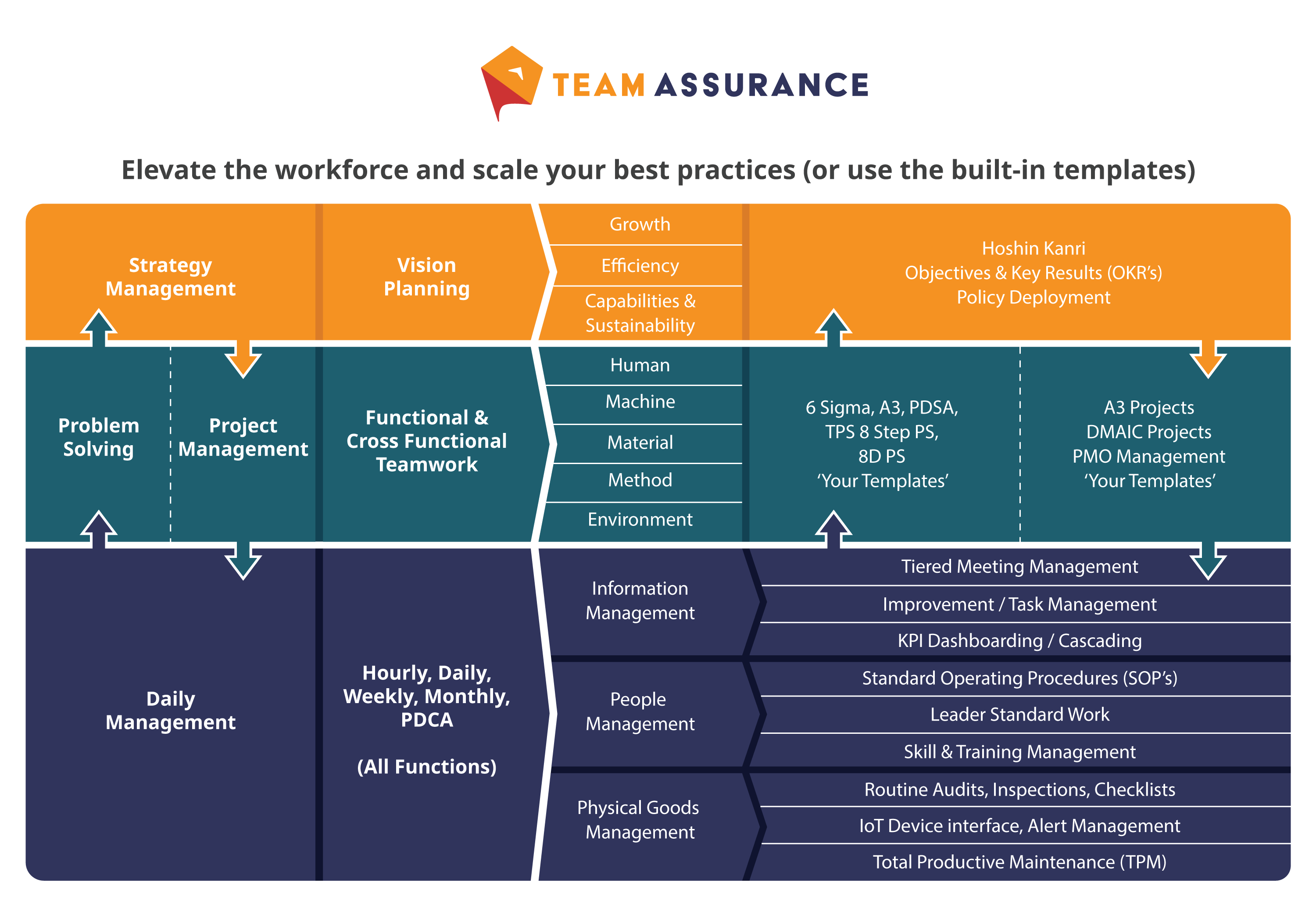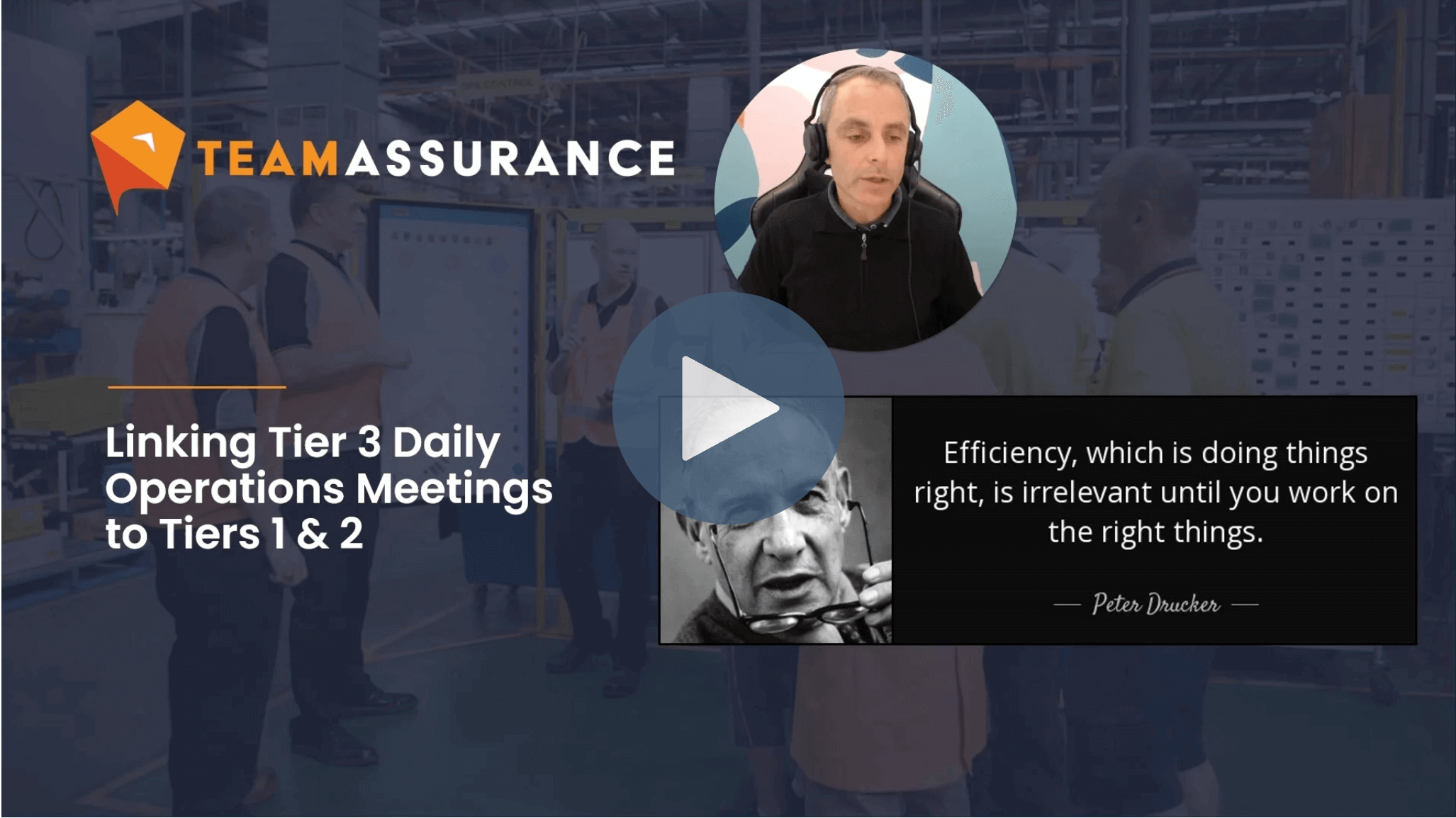Dive into why no blame culture is inherently human, and how organisational influence can impact our ability to perform effectively.
The spirit of continuous improvement centres around the principles of designing and executing experiments in order to learn and improve. These cycles of learning and improvement should happen on a daily basis. It is best practiced by people at the frontlines of the process, whilst supported and served by their leaders. It can only happen in an environment that is psychologically safe and encourages people to take calculated risks without fear of reprisal or negative consequences.
No blame culture is inherently human
From an early age we have a thirst for knowledge and experience; we are wired to solve the problems in our immediate environment. This is what drives us to learn the skills and attributes that help us to engage with, and survive in, the world. The process is one of experimentation – it is one of many mistakes and failures. Yet this crucible is one where the missteps and misadventure are expected. We are not judged poorly for the outcomes. We also have people around us – our parents, our siblings and our peers – supporting and guiding us in our journey. These people create a safe place to learn and grow.
As we move through our adolescence into adulthood learning becomes centred around pass / fail. Learning is driven by outcome rather than curiosity and improvement. Our education system and workplaces begin to condition our minds around compliance, conformity and judgement.
Mistakes and experimentation outside of the norm are discouraged. In the workplace, deviation from the norm, mistakes, and failures can often result in implicit and explicit blame. There are also punitive consequences which creates fear and uncertainty.
In my experience human beings have the best intentions. We want to do the right thing and do the best job we can with what we have to work with. We also learn by doing – practically applying our current skills to a particular task or activity and refining them over time through repetition.
Nobody deliberately stuffs up to make life more difficult for their team or themselves. We are wired to fit in and contribute positively to our community. So it is not in our interest to jeopardise our place by rocking the boat, making mistakes, or not doing our part.
An emphasis on outcomes over experimentation
Unfortunately, in many of our modern workplaces the emphasis is placed on numbers and outcomes rather than people and process. The cultures and behaviours that are created, particularly at a leadership level, becomes one of low tolerance for mistakes and/or anything outside of the ordinary.
There are two facts here – one is that people’s performance and behaviour is predicated on the quality of the leadership and of the process. The other is that in order to learn and to solve problems experimentation must occur.
Eliminate fear from the workplace
The eighth of Demings fourteen principles is: Drive out fear. Why does he say that? It is because as human beings we do not respond well to an environment where our physical or emotional safety is at risk.
Our response to fear as humans is to enter a state of fight or flight. We prepare to engage or disengage in order to protect ourselves from perceived danger. This state creates an internal response where our sympathetic nervous system is activated. The hormone cortisol is produced by your adrenal glands and released into your bloodstream. This induced state causes:
- Your heart rate and blood pressure to increase;
- Reduced blood flow to extremities;
- Feeling on edge and breathing rapidly;
- Being tense, shaking;
- Dialated pupils;
- Extreme focus and single mindedness reducing executive brain function.
This response is designed to help us through catastrophic circumstances. Evolution has ensured it exists because it works and we survived. Well, it did work back in our caveman days when danger was all around. The rustling in the bushes could be a sabre tooth tiger or someone else looking to cause us harm. These days real danger is less common yet our response to a perceived threat is still the same thousands of years later.
No blame culture and fear cannot coexist
In workplaces where we have psychological or emotional stress this response will be triggered during “non-life threatening” situations. However, these situations are still subconsciously perceived as dangerous – think angry boss, blame, being singled out and humiliated etc.
Imagine an environment where this is an everyday reality. A place where people face accusation, blame, and perceived failure is punished. To state the obvious – these are not optimal conditions for human beings to be their “best selves”. Sure we want our staff to have a good sense of professional accountability, but it does not facilitate engaging in any improvement or learning activity. Interacting within such environments is simply about fitting in and surviving.
If we think of the times we have had great ideas or have been in a state of flow it is when we have felt connected, comfortable, safe, and supported. Our brain and body can relax and we can be operating at full capability. We are not diminishing our intellectual, emotional and physical energy through base survival mechanisms.
The moral of the story is that as human beings we are products of our environment and conditioning. Those environments will often dictate how we behave and perform. The success or failure of any continuous improvement initiative will never be about how many lean tools you use or how well you understand them. It will be about how successfully you create the right environment for your people to feel safe in showing up every day. How successfully you embed a no blame culture across the organisation. Without getting this right, A3 thinking or the PDCA cycle will always be impaired within the organisation.
Allow them to be vulnerable in growing through collaboration, continuous learning, and a no blame culture.
Develop the whole C.I. framework, not locally optimised ‘islands’.
Providing autonomy and giving agency to individuals requires systems that support decision making at every level. These must supported by the right data and, at all times, be aligned to strategy. To support individual Mastery requires systems that allow people to easily access the training & information they need to better themselves.
The illustration below shows how we designed an interconnected platform which achieves these goals. One that avoids disconnected ‘Point solutions’ (digital or analog) that do not help sustain either lasting business performance, employee motivation, or a ‘no blame’ culture.

Facilitate a no blame culture through collaboration and continuous improvement using the TeamAssurance platform. If you’re a business in need (or a consultant with clients in need) Book a demonstration today.






